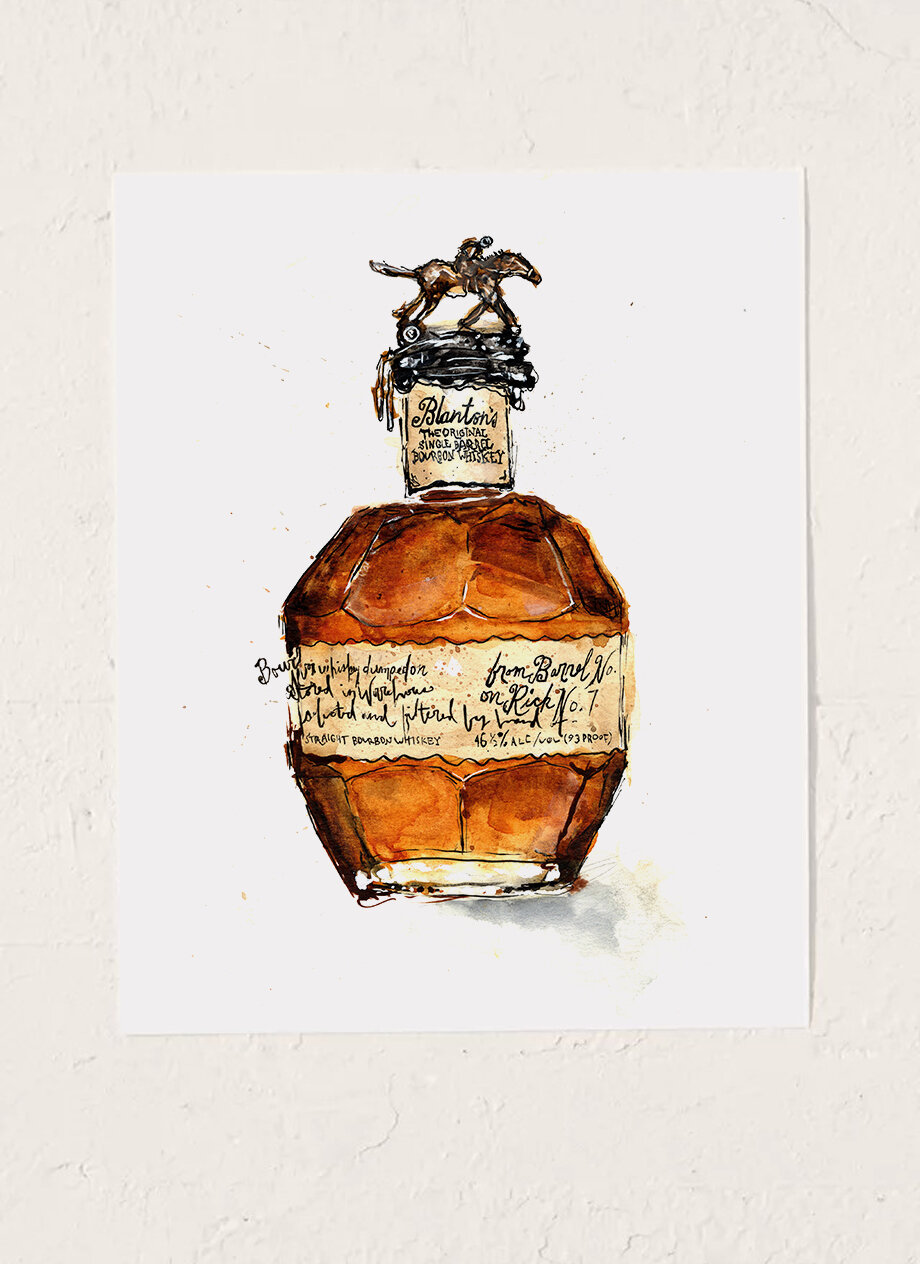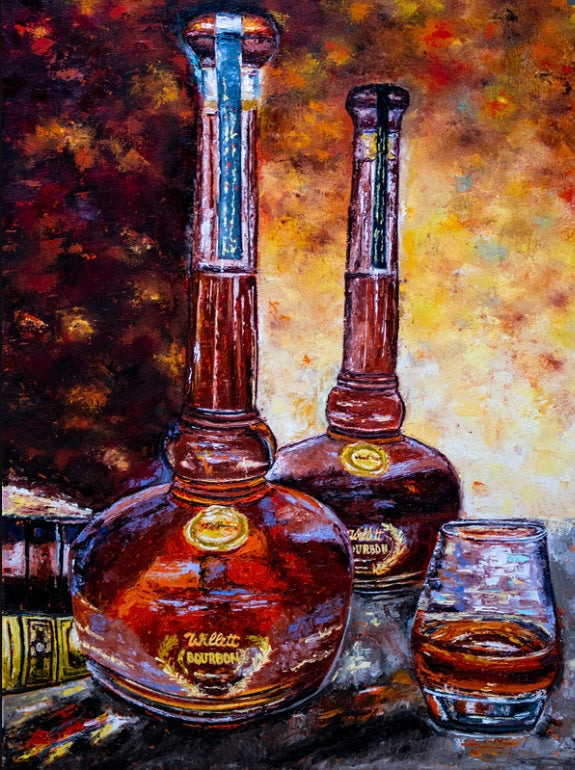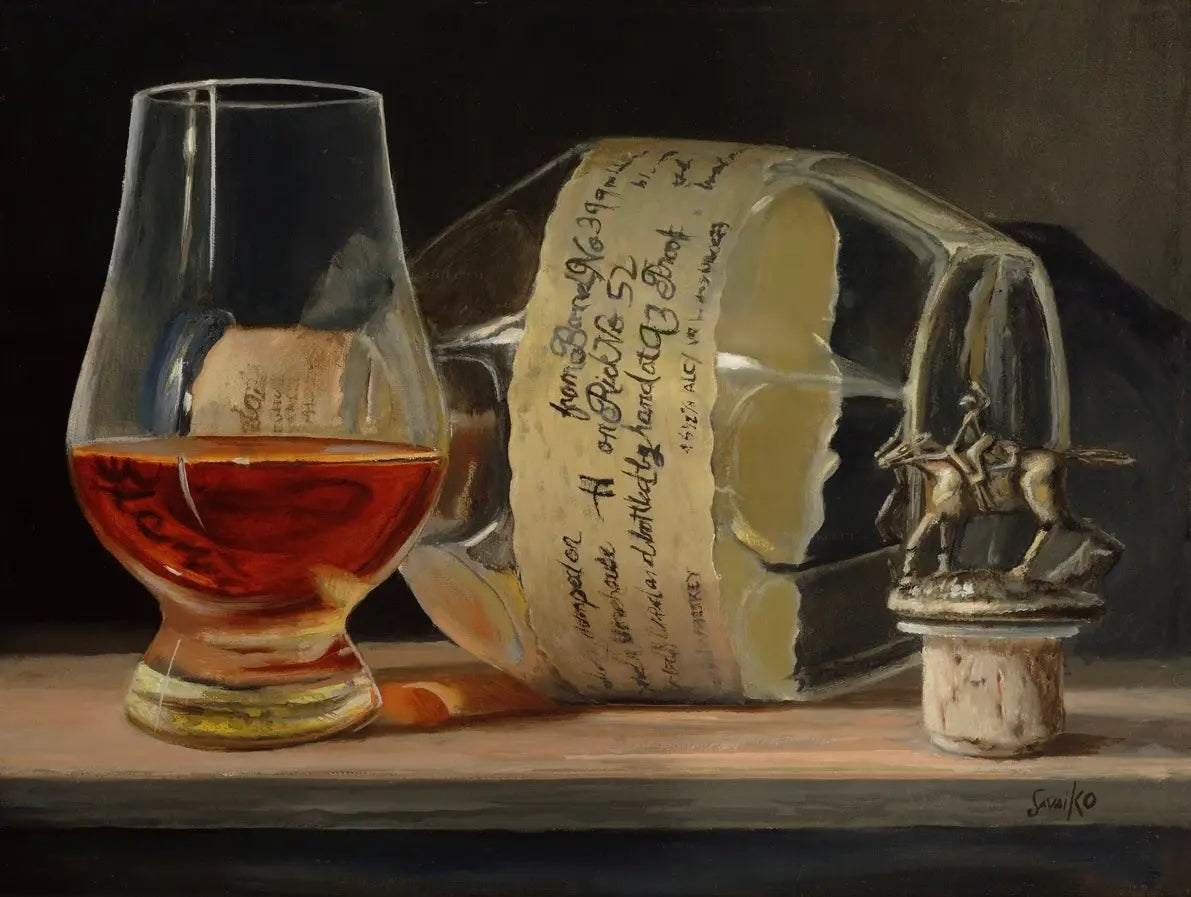Unveiling the Beauty of Bourbon Art: A Homage to Craft Distillers
Wiki Article
The Relevance of Whiskey Art in Celebrating Heritage and Craftsmanship in the Beverage Industry
The detailed relationship between scotch art and the event of heritage and workmanship within the drink industry can not be overstated. With thoughtfully made bottles and labels, whiskey brands encapsulate their historical roots and the artisanal abilities that specify their manufacturing approaches. This imaginative measurement not just boosts market appeal but also functions as a channel for cultural storytelling, promoting a deeper connection between the craft and the consumer. As we check out the different aspects of this subject, intriguing questions about the impact of modern trends on traditional techniques arise, motivating more exam.The Historical Origins of Whiskey
At the heart of whiskey's allure exists a rich tapestry of historic origins that trace back to ancient human beings. The beginnings of whiskey can be linked to the distillation methods of the Sumerians and Babylonians around 2000 BCE, where very early forms of fermented grain drinks started to arise. It was in the Middle Ages that the art of purification developed significantly, especially in Ireland and Scotland, leading to the creation of scotch as we know it today.
The term "scotch" itself originates from the Gaelic word "uisce beatha," implying "water of life." This expression underscores the social significance of scotch in Celtic societies, where it was commonly related to routines, parties, and communal bonding. By the 15th century, distillation came to be a recognized craft within monastic areas, paving the way for the facility of lawful distilleries.
As trade routes broadened, bourbon's appeal grew, transcending local borders and recording the interest of lovers worldwide. Realism Art. This historic journey reflects not only the craftsmanship behind scotch manufacturing yet also its essential function in social and social contexts, noting it as a substantial drink throughout background
Artistic Expression in Branding
Whiskey branding stands as a compelling intersection of artistry and commerce, where visual identity plays an important function in forming customer understanding. The visual appeals of whiskey labels, packaging, and marketing materials reflect not just the brand name's tale yet likewise its core values and heritage. With creative expression, distilleries convey a narrative that reverberates with customers, stimulating emotions and sparking connections.Using color, typography, and images in branding serves to set apart products in a saturated market. For instance, standard concepts may stimulate a sense of credibility and craftsmanship, while contemporary layouts can symbolize innovation and forward-thinking. This tactical artistic direction boosts brand acknowledgment and loyalty, enabling consumers to forge an individual relationship with the scotch they pick.
Moreover, creative expression in branding usually functions as an event of local heritage. Distilleries regularly incorporate local signs or historic referrals right into their designs, creating a local color that invites customers to participate in a more comprehensive cultural experience. Ultimately, the creativity behind scotch branding not only improves aesthetic charm however additionally improves the total story of the brand name, cultivating a much deeper admiration for the workmanship and heritage ingrained in each container.
Workmanship in Container Style
The creativity obvious in scotch branding prolongs beyond visual identity to incorporate the workmanship associated with container style. Each bottle serves as a vessel not just for the spirit within, yet additionally for the tale it tells regarding its tradition, beginning, and top quality. The style process requires meticulous focus to detail, as elements such as product, closure, and shape contribute dramatically to the general perception of the bourbon.Craftsmanship in container style involves picking top notch glass that can enhance the bourbon's color and quality, while likewise providing a responsive experience for the consumer. The shape of the container need to be both cosmetically attractive and useful, typically mirroring the heritage of the brand. Several distilleries select one-of-a-kind shapes or printed logo designs that evoke a feeling of credibility and history.
In addition, the label style and typography play a crucial function in connecting the brand's narrative. Realism Art. A well-crafted bottle not just astounds the customer's eye yet additionally reinforces the brand name's commitment to high quality and custom. By doing this, the craftsmanship of container design ends up being a vital element of the scotch experience, combining creativity with an extensive respect for heritage
Social Significance of Scotch Art
Commemorating tradition and workmanship, the social importance of bourbon art transcends simple aesthetic appeals, linking with the historic and social stories of the regions from which it stems. Each bottle acts as a canvas, showing the distinct tales, mythology, and traditions that have actually formed local whiskey-making practices. The complex layouts frequently show the heritage of the distillers, including symbols and motifs that resonate with the society and worths of their areas.
Additionally, scotch art plays a vital function in public events and parties, functioning as a concrete web link between individuals and their shared experiences. By valuing the artistry in scotch product packaging, consumers grow a much deeper understanding and respect for the craft, eventually improving their enjoyment of the beverage itself.
Modern Trends in Bourbon Discussion
Over the last few years, the discussion of bourbon has developed to show modern tastes and trends while still recognizing typical craftsmanship - Whiskey Art. Distilleries are significantly concentrating on aesthetic elements that improve the general alcohol consumption experience, linking the void in between heritage and modernityInnovative best site bottle designs have arised, usually including sustainable materials and artistic labels that tell compelling stories. Lots of brand names currently team up with neighborhood musicians, instilling their items with one-of-a-kind aesthetic expressions that reverberate with customers. In addition, limited-edition releases are often packaged in collectible containers, adding value and appeal for connoisseurs.

Final Thought
Finally, whiskey art functions as a crucial avenue for expressing the heritage and craftsmanship intrinsic in the drink sector. Via intricate branding, ingenious bottle styles, and culturally substantial imaginative components, bourbon brands effectively honor their traditions and link with consumers. This creative story not just raises the recognition of scotch yet additionally enhances area identification and satisfaction amongst manufacturers. Eventually, scotch art plays a necessary duty in preserving and commemorating the abundant cultural tapestry of whiskey-making.

Workmanship in bottle layout entails choosing premium glass that can enhance the whiskey's color and quality, while likewise providing a responsive experience for the customer. In this way, the workmanship of bottle design comes to be a crucial aspect of the bourbon experience, merging artistry with an extensive respect for heritage.
In verdict, scotch art serves as an essential channel for sharing the heritage and workmanship inherent in the drink industry.
Report this wiki page